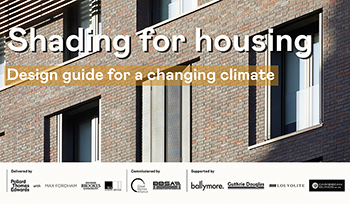Outdoor porcelain tiles
Contents |
[edit] Introduction
There are several types of porcelain tiles that are suitable for outdoor applications. Some of these products have properties that protect the durability of the coating under these conditions.
[edit] Frost resistance
The main indicator of exterior porcelain tiles is the frost resistance of the material. This characteristic is determined through a series of tests. The essence of the test consists of alternate freezing-thawing of the sample and studying the consequences of this.
The national certification procedure foresees 50 freeze-thaw cycles, but in practice, porcelain tiles should be able to withstand more than 200 cycles. The material itself should work in a temperature range from frost down to -50°C.
In addition, there is are special frost-resistant outdoor porcelain tiles which are suitable for laying in regions with a severe climate.
[edit] Water absorption
The high frost resistance of outdoor porcelain tiles is due to its low moisture absorption. The water absorption of this material does not exceed 0.05%, which is very low.
The destruction of the material occurs after the penetration of moisture into its pores, which begins to freeze, increases in volume and destroys the structure.
[edit] Wear resistance
The wear resistance of outdoor porcelain tiles is determined by three criteria: hardness, resistance to deep wear and resistance to wear.
For outdoor use, it is sufficient to use class 7 porcelain tiles according to the Mohs hardness scale. The Mohs scale designates the hardness class of a material from one to 10 (where one is talc and 10 is diamond).
According to EN 154 (European standard), abrasian tests are carried out with a corundum roller. Depending on the speed of this roller on the surface of the porcelain tiles, which has not caused visible damage, the material is assigned a certain abrasion resistance class (PEI I - PEI V).
The deep wear resistance index is determined by the volume of material removed from the tile during testing. For outdoor porcelain tiles, this figure is in the range of 110-140 mm. According to EN 102, the limit for floor coverings must not exceed 250 mm.
[edit] Related articles on Designing Buildings Wiki
Featured articles and news
Shading for housing, a design guide
A look back at embedding a new culture of shading.
The Architectural Technology Awards
The AT Awards 2025 are open for entries!
ECA Blueprint for Electrification
The 'mosaic of interconnected challenges' and how to deliver the UK’s Transition to Clean Power.
Grenfell Tower Principal Contractor Award notice
Tower repair and maintenance contractor announced as demolition contractor.
Passivhaus social homes benefit from heat pump service
Sixteen new homes designed and built to achieve Passivhaus constructed in Dumfries & Galloway.
CABE Publishes Results of 2025 Building Control Survey
Concern over lack of understanding of how roles have changed since the introduction of the BSA 2022.
British Architectural Sculpture 1851-1951
A rich heritage of decorative and figurative sculpture. Book review.
A programme to tackle the lack of diversity.
Independent Building Control review panel
Five members of the newly established, Grenfell Tower Inquiry recommended, panel appointed.
Welsh Recharging Electrical Skills Charter progresses
ECA progressing on the ‘asks’ of the Recharging Electrical Skills Charter at the Senedd in Wales.
A brief history from 1890s to 2020s.
CIOB and CORBON combine forces
To elevate professional standards in Nigeria’s construction industry.
Amendment to the GB Energy Bill welcomed by ECA
Move prevents nationally-owned energy company from investing in solar panels produced by modern slavery.
Gregor Harvie argues that AI is state-sanctioned theft of IP.
Experimental AI housing target help for councils
Experimental AI could help councils meet housing targets by digitising records.
BSRIA Occupant Wellbeing survey BOW
Occupant satisfaction and wellbeing tool inc. physical environment, indoor facilities, functionality and accessibility.






















